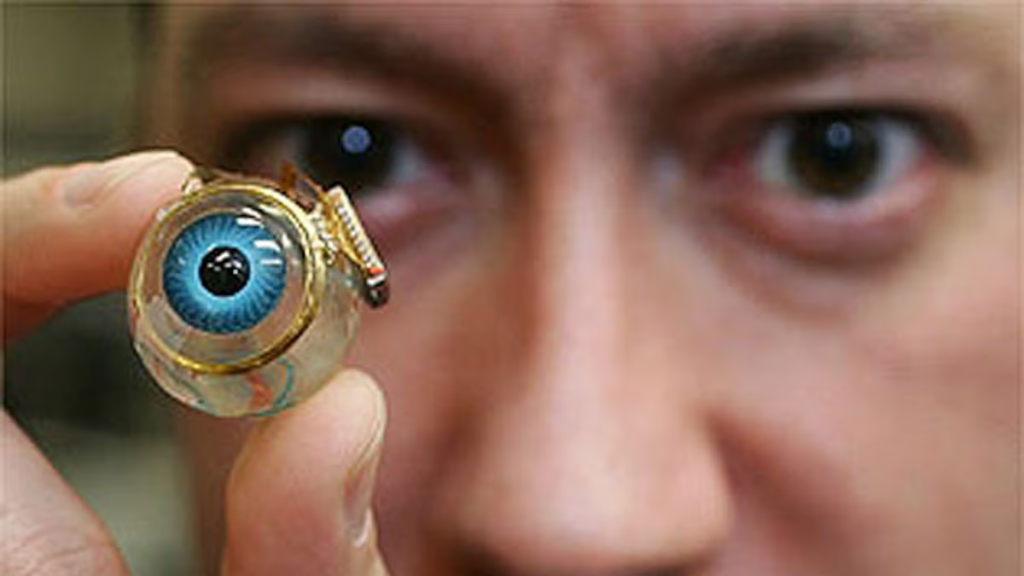The bionic eye represents a significant advancement in medical technology, designed to address one of the major challenges of blindness, which affects millions of people worldwide. This innovative device aims to restore vision to those who have lost their sight due to various conditions, such as macular degeneration, retinitis pigmentosa, or eye injuries. The quest to restore vision has led researchers to develop solutions that integrate electronic and biological components, thus generating the need for a device that is not only functional but also practical for the user.

The development of the bionic eye has gained prominence in Australia, where research and implementation of advanced technologies in medicine have been pioneering. In a context where innovation has become a priority, Australian health institutions have played a crucial role in the creation and development of these technologies. This advancement not only represents a life-changing opportunity for those who suffer from blindness, but also marks a milestone at the intersection of science, health, and technology.
The bionic eye is based on a system that includes a camera mounted on glasses, which captures images and converts them into electrical signals. These signals are sent to an implant placed in the eye, which stimulates the optic nerve and, ultimately, sends the visual information to the brain. This process represents one of the first steps toward partial vision restoration, providing users with a new way to interact with their environment. In this sense, the bionic eye is positioned not only as a medical device, but as an agent of change in the way we perceive human capabilities.
Background of Vision Loss
Vision loss is a public health issue affecting millions of people worldwide, and currently, it is estimated that more than 2.7 million people in Australia experience some degree of blindness or vision impairment. Blindness can be caused by a variety of factors, with the most common including diseases such as age-related macular degeneration, diabetes, glaucoma, and cataracts. These conditions not only impact individuals’ quality of life but also represent a significant burden on health systems.
Macular degeneration, for example, is one of the leading causes of blindness, especially among the elderly population. It is estimated to affect approximately 1 in 7 people over the age of 50. Glaucoma is another eye disease that can result in irreversible vision loss if not diagnosed and treated early. Approximately 300,000 Australians suffer from glaucoma, and early detection is crucial to prevent the disease from progressing.
Furthermore, diabetes is a significant risk factor, with approximately 1.2 million Australians diagnosed with diabetes and many more unaware they have it. Diabetic retinopathy, which can result from this disease, is a leading cause of blindness in young adults. Statistics reveal the magnitude of the problem and the urgent need for innovative solutions, such as the bionic eye, that could improve the lives of those suffering from severe vision loss.
In conclusion, vision loss is a global challenge that has affected millions of people. Technological alternatives, such as the bionic eye, represent a potential solution to help reverse or mitigate the effects of blindness and offer those affected the opportunity to regain some of their vision. Statistics on the prevalence of these diseases emphasize the continued need for advances in the treatment and rehabilitation of people with visual impairments.
How the Bionic Eye Works
The bionic eye represents a significant advance in medicine and technology, designed to restore vision to people who are blind or severely visually impaired. This electronic device, known as “news” in the scientific community, operates through a complex interaction between technology and the human nervous system. Its operation is based on the capture of images through a camera mounted on glasses, which transmits visual information to an external processor.
Once the camera captures light and images of the environment, those signals are converted into a format that can be recognized by the bionic eye. This processing involves transforming visual data into electrical impulses that are directed toward a series of electrodes implanted in the retina or optic nerve. These electrodes act as an interface between the device and the brain, stimulating the nerve cells responsible for visual perception. Thus, the bionic eye converts the environment into light patterns that the brain can interpret.
As research and development progresses, bionic vision devices, such as the bionic eye, continue to improve in resolution and responsiveness, allowing users to enjoy a richer and more meaningful visual experience. The integration between the bionic eye and the human nervous system is crucial to the device’s success, as it ensures that the signals sent produce an accurate visual interpretation of reality. This advancement not only marks a technological milestone but also represents hope for many people who long to regain their ability to see and fully participate in society.
Development and Innovation in Australia
The development of the bionic eye in Australia represents a significant achievement in biomedicine, whose history dates back several decades of innovation and research. This pioneering project was led by the team at the University of Melbourne’s Eye Health Research Centre, in collaboration with various institutions such as the Swinburne Institute of Technology and the University of Queensland. Since its inception, the research has been led by a multidisciplinary group of scientists, engineers, and ophthalmologists, working together to address the challenges faced by blind people.
One of the most important milestones in the evolution of the bionic eye was the creation of the initial prototype, which began development in the early 2000s. This first device was designed to offer blind people the ability to regain rudimentary vision, allowing them to detect shapes and patterns. Clinical trials conducted at the Royal Victorian Eye and Ear Hospital were instrumental in refining the technology, leading to significant advances in the device’s effectiveness.
Australian government funding has been crucial in driving this project forward. Through research excellence programs and specific funding aimed at improving the quality of life of people with disabilities, the necessary resources were secured to conduct extensive research and clinical trials. Furthermore, the scientific community has shown great interest in bionic eye technology, actively collaborating on research aimed at improving the device’s design and functionality. This collective commitment has positioned Australia at the forefront of technological development in this area, offering hope to those who suffer from blindness.
Clinical Trial Results
Clinical trials of the bionic eye have yielded significant results that underscore its potential to revolutionize the vision of blind people. A significant number of patients participating in clinical trials reported improvements in their visual ability after the implementation of this innovative device. In particular, many of these individuals, who previously relied on canes and guides, were able to identify shapes, lights, and even read simple text.
Data collected during the trials indicated that approximately 80% of participants experienced some form of visual improvement. This not only represents a technical advance but also a positive emotional impact, with testimonials from users who have regained a degree of independence and quality of life. One notable testimony came from a patient who, after receiving the bionic eye, expressed that for the first time in several years, he was able to recognize his family and friends.
In addition to individual testimonials, a broader analysis was conducted to assess the overall acceptance of the bionic eye among users. The results indicated that the majority of patients were satisfied with the device’s functionality, highlighting its intuitive design and ease of use. These factors were crucial in ensuring its integration into the daily lives of those who used it.
In conclusion, clinical trials of the bionic eye have demonstrated its effectiveness, providing encouraging data on its impact on the lives of blind people and its general acceptance. Patient testimonials reflect the transformation this technological advancement can offer in the field of vision.
Advantages and Challenges of the Bionic Eye
The bionic eye, an innovative visual prosthesis, represents a significant advance in the quality of life for blind people. One of the main advantages of the bionic eye is its ability to provide limited perception of light and shapes, which can allow users to navigate their environment more effectively. This improves not only their independence but also their emotional and social well-being. By regaining some of their vision, many recipients report increased confidence and a reduction in feelings of isolation.
However, the use of the bionic eye also presents technical and ethical challenges. From a technical perspective, one of the main obstacles is the high cost associated with this type of technology. Currently, the price of a bionic eye implant and its installation can be unaffordable for many people, limiting its implementation and availability in various regions. Furthermore, the technique requires ongoing medical monitoring and training, which may be uncomfortable for some users.
From an ethical perspective, questions arise regarding equity in access to these technologies, as well as potential societal pressure for blind people to adopt bionic solutions. There are also concerns about the long-term safety and effectiveness of these types of devices, given that surgical intervention and device management can involve risks. Therefore, although the bionic eye represents a symbol of hope and progress, it is crucial to address these challenges to maximize its potential and ensure that all those who need it have the opportunity to benefit from a better quality of life.
Comparison with Other Visual Technologies
The field of vision restoration has advanced considerably, offering diverse options for people with visual impairments. Among these, the bionic eye stands out for its innovation and potential to redefine the visual experience. However, it is important to compare it with other technologies, such as retinal implants and optical aids, to understand its effectiveness and applicability in different contexts.
Retinal implants, such as the Argus II, focus on replacing the functions of damaged photoreceptor cells. These devices convert visual signals into electrical impulses, which are sent to the brain through electrodes. Despite their success in certain patients with macular degeneration and retinitis pigmentosa, their effectiveness often varies, depending on the condition of the optic nerve and the overall health of the eye. Additionally, retinal implants require invasive surgical procedures and can present complications, limiting their use in some individuals.
On the other hand, optical aids, which range from magnifying lenses to assisted vision systems, offer less invasive solutions. These technologies focus on maximizing residual vision and are particularly effective for those with minor visual impairments. However, they do not address total vision loss, which may make them less useful for blind people. In contrast, the bionic eye is presented as an option that not only seeks to improve residual vision but also provides a visual experience closer to natural conditions.
In short, each technology has its advantages and disadvantages. While the bionic eye promises significant advancements, existing options such as retinal implants and optical aids remain relevant and effective in their respective contexts. The selection of the optimal method will depend on the patient’s specific condition and visual expectations.
Social Impact of the Bionic Eye
The bionic eye has emerged as a significant milestone in the field of medical technology, specifically in the treatment of visual impairment. This innovation, hailed in recent news reports, not only offers new hope for blind people but also has a profound social and cultural impact. Adding a bionic eye to an individual’s life can transform not only their personal perception of disability but also society’s view of people with visual impairments in general.
The ability to re-experience light and shapes through the bionic eye represents an unprecedented opportunity for those who have lived in darkness. This can generate a remarkable change in these individuals’ self-esteem, leading to better integration into society. By being able to interact with their environment in ways previously impossible, people with visual impairments can develop greater independence. Furthermore, this independence often translates into a change in family dynamics, as caregivers can see their loved ones participating more actively in everyday life.
However, the impact of the bionic eye goes beyond individual experiences; it also challenges public perceptions of blindness. Often, blind people are viewed through a lens of pity and limitations. With the introduction of this new technology, the narrative can evolve toward a more positive perspective, where people with disabilities can be seen as individuals with potential and abilities, capable of contributing meaningfully to society. Thus, the bionic eye not only revolutionizes vision but also paves the way for greater acceptance and understanding within the community.
The Future of Bionic Technology
Bionic technology has emerged as an innovative field that offers new hope to people with disabilities, transforming the way they interact with the world. The world’s first bionic eye, developed in Australia, is a prime example of how science and engineering can come together to create revolutionary solutions. This development not only drives better treatments for blindness but also raises a potentially exciting future for other organs and senses down the road.
Current research in this field is focusing on improving and perfecting bionic devices. Scientists are exploring various applications that could eventually range from bionic hearing, which could restore hearing to those who have lost it, to implants designed to restore the function of organs such as the heart and kidneys. This opens up a range of opportunities that could radically change the quality of life for millions of people with physical disabilities.
However, progress in bionic technology is not without challenges. Integrating bionic devices into the human body requires meticulous development, both in terms of technology and biocompatibility. These devices must be safe, effective, and easy to use, which is a complex goal to achieve. Furthermore, ethical and accessibility considerations must be addressed to ensure that everyone, regardless of their economic situation, can benefit from these advances. As research continues, it is essential that the scientific community, governments, and non-governmental organizations work together to overcome these obstacles.


